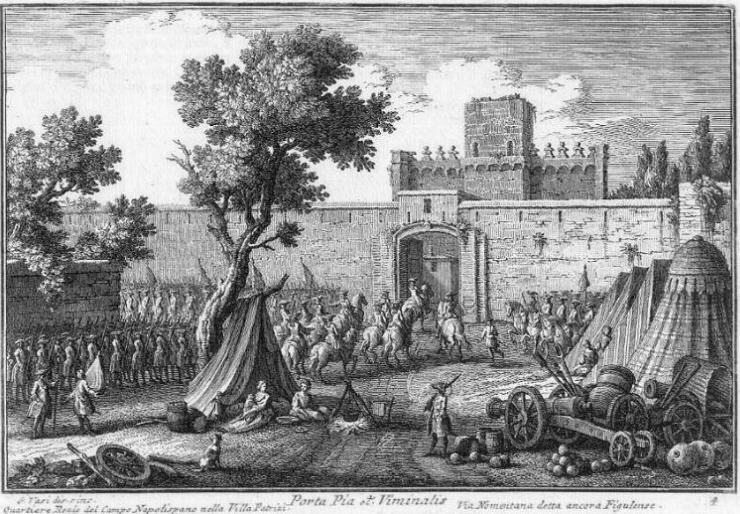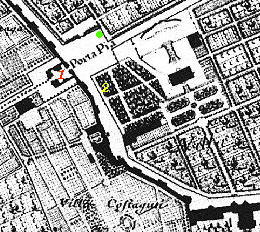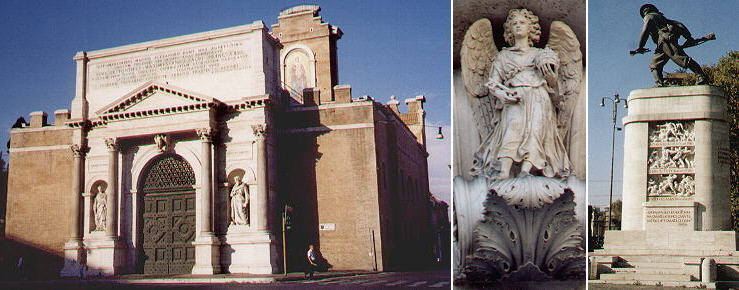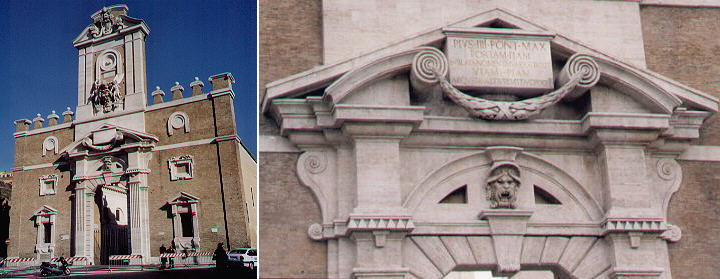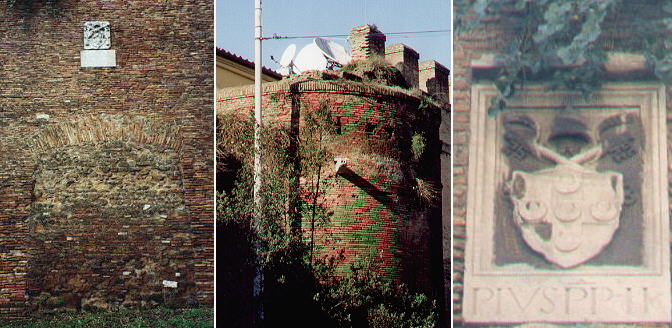  Porta Pia (Book 1) (Map A2) (Day 2) (View B6) (Rione Trevi) and (Rione Monti) In this page:
Book I is dedicated to Charles III, King of the two Sicilies who
became King of Spain in 1759. Vasi portrays in this plate a visit paid
by the King in 1744 to Benedictus XIV. The view is taken from the green dot in the small 1748 map here below which shows:
1) Porta Pia; 2) Gardens of Villa Patrizi. The dotted line near Porta Pia in the small map delineates the
border between Rione Trevi (left) and Rione Monti (right).
The outer part of Porta Pia was rebuilt under Pius IX in 1868. At the time the State of the Church was restricted to Latium and the pope was aware he could not resist from a military point the Italian army; maybe that is why there is an angel holding the symbols of the pope, as if protecting the gate. But in 1870, the collapse of the French Empire (Napoleon III protected the State of the Church) left the pope without allies and on September 20, 1870 the Italian bersaglieri (light infantry) entered Rome through a breach near Porta Pia.
Michelangelo prepared three different sketches for this gate and Pius IV apparently chose the least expensive one. The coat of arms was selected by Filippo Juvarra to open his book of drawings on the coats of arms of the popes. Porta Pia replaced in a slightly different position Porta Nomentana, known also as Porta S. Agnese, because it led to the church of S. Agnese fuori delle Mura. In general the monumental side of the gates of Rome is the external one. Porta Pia is an exception: Pius IV opened a straight road (named after him Strada Pia) which linked the Quirinal with this gate; the decoration of its internal side was meant as a celebration of Strada Pia. The Walls between Porta Pia and Castro Pretorio
Porta Nomentana can still be identified in the wall to the left of
Porta Pia. Above it Pius IV put a little coat of arms. The towers near Porta Pia were strengthened in the XVth
century by Pope Pius II, whose coat of arms shows five little moons.
Next plate in Book 1: Porta Chiusa Next step in Day 2 itinerary: Casino e Villa Patrizi Next step in your tour of Rione Trevi: Chiesa di S. Susanna Next step in your tour of Rione Monti: Mura dell'antico Castro Pretorio
Go
to |
All images © 1999 - 2003 by Roberto Piperno. Write to romapip@quipo.it
